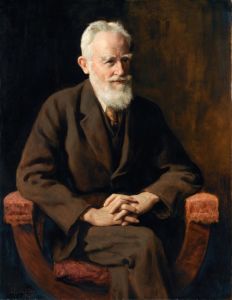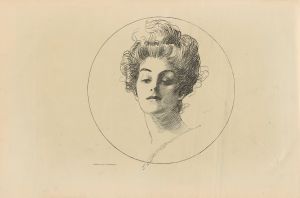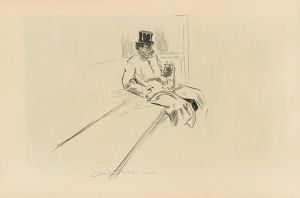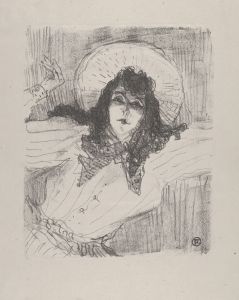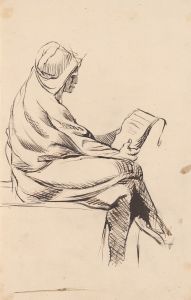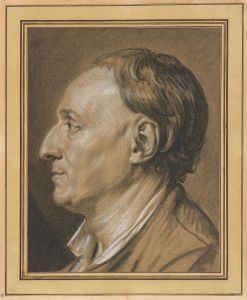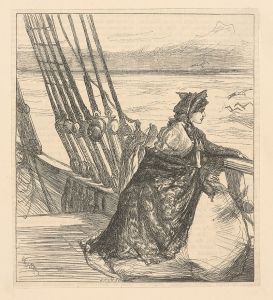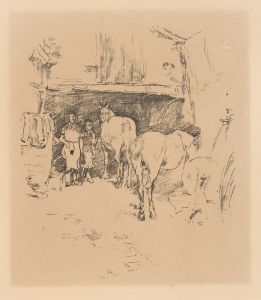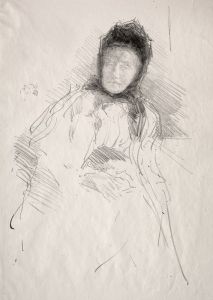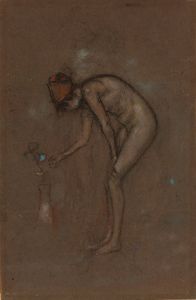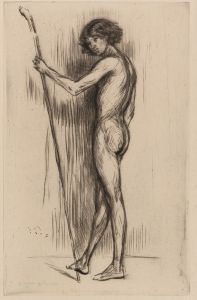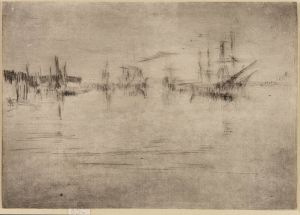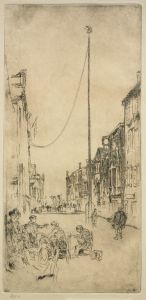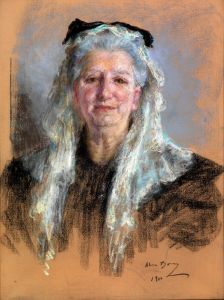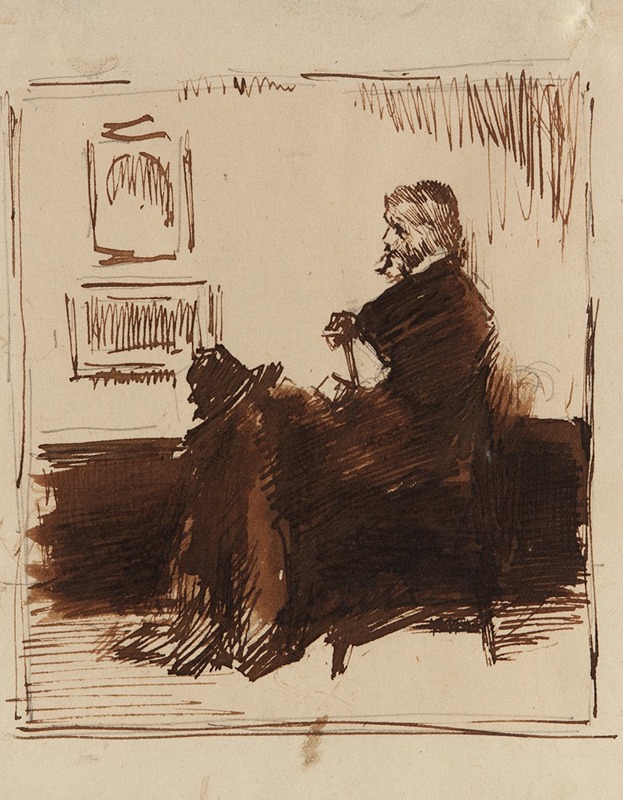
Portrait Sketch of Thomas Carlyle
A hand-painted replica of James Abbott McNeill Whistler’s masterpiece Portrait Sketch of Thomas Carlyle, meticulously crafted by professional artists to capture the true essence of the original. Each piece is created with museum-quality canvas and rare mineral pigments, carefully painted by experienced artists with delicate brushstrokes and rich, layered colors to perfectly recreate the texture of the original artwork. Unlike machine-printed reproductions, this hand-painted version brings the painting to life, infused with the artist’s emotions and skill in every stroke. Whether for personal collection or home decoration, it instantly elevates the artistic atmosphere of any space.
The "Portrait Sketch of Thomas Carlyle" is a work by the American-born artist James Abbott McNeill Whistler, renowned for his contributions to the Aesthetic Movement and his innovative approach to portraiture and composition. This particular sketch is a preparatory work for Whistler's more famous painting, "Arrangement in Grey and Black, No. 2: Portrait of Thomas Carlyle," which is housed in the Kelvingrove Art Gallery and Museum in Glasgow, Scotland.
James Abbott McNeill Whistler was born on July 11, 1834, in Lowell, Massachusetts, and spent much of his career in Europe, particularly in London. He was a pivotal figure in the art world during the late 19th century, known for his distinctive style that emphasized mood and color harmony over detailed realism. Whistler's approach often involved a limited palette and a focus on the overall composition, which he famously referred to as "arrangements" or "harmonies."
Thomas Carlyle, the subject of the sketch, was a prominent Scottish philosopher, historian, and essayist, known for his works on the French Revolution and his influential ideas on leadership and society. Carlyle was a significant intellectual figure in the 19th century, and his writings had a profound impact on Victorian thought.
The sketch of Carlyle by Whistler is notable for its loose, expressive style, capturing the essence of Carlyle's character with minimal detail. Whistler's technique in this sketch reflects his broader artistic philosophy, which prioritized the impression of the subject over meticulous representation. This approach aligns with the principles of the Aesthetic Movement, which advocated for "art for art's sake" and emphasized beauty and sensory experience over moral or narrative content.
The relationship between Whistler and Carlyle was one of mutual respect, although they came from different artistic and intellectual backgrounds. Whistler admired Carlyle's intellect and presence, which he sought to convey through his portraiture. The sketch served as a study for the final painting, allowing Whistler to experiment with composition and form before committing to the larger, more detailed work.
The final painting, "Arrangement in Grey and Black, No. 2," is often compared to Whistler's other famous work, "Arrangement in Grey and Black No. 1," commonly known as "Whistler's Mother." Both paintings share a similar compositional style, focusing on the sitter's profile and employing a restrained color palette. The portrait of Carlyle, like that of Whistler's mother, is celebrated for its subtlety and the artist's ability to convey depth of character through simplicity.
Whistler's portrait of Carlyle was completed in 1873 and has since been recognized as a masterpiece of portraiture. It reflects Whistler's innovative approach to art, which has influenced generations of artists. The sketch itself, while less renowned than the final painting, remains an important piece of Whistler's oeuvre, offering insight into his creative process and the development of his artistic ideas.
In summary, the "Portrait Sketch of Thomas Carlyle" by James Abbott McNeill Whistler is a significant work that exemplifies the artist's unique style and his contribution to the Aesthetic Movement. Through this sketch, Whistler captures the essence of one of the 19th century's most influential thinkers, demonstrating his skill in portraying character and mood with economy and grace.





